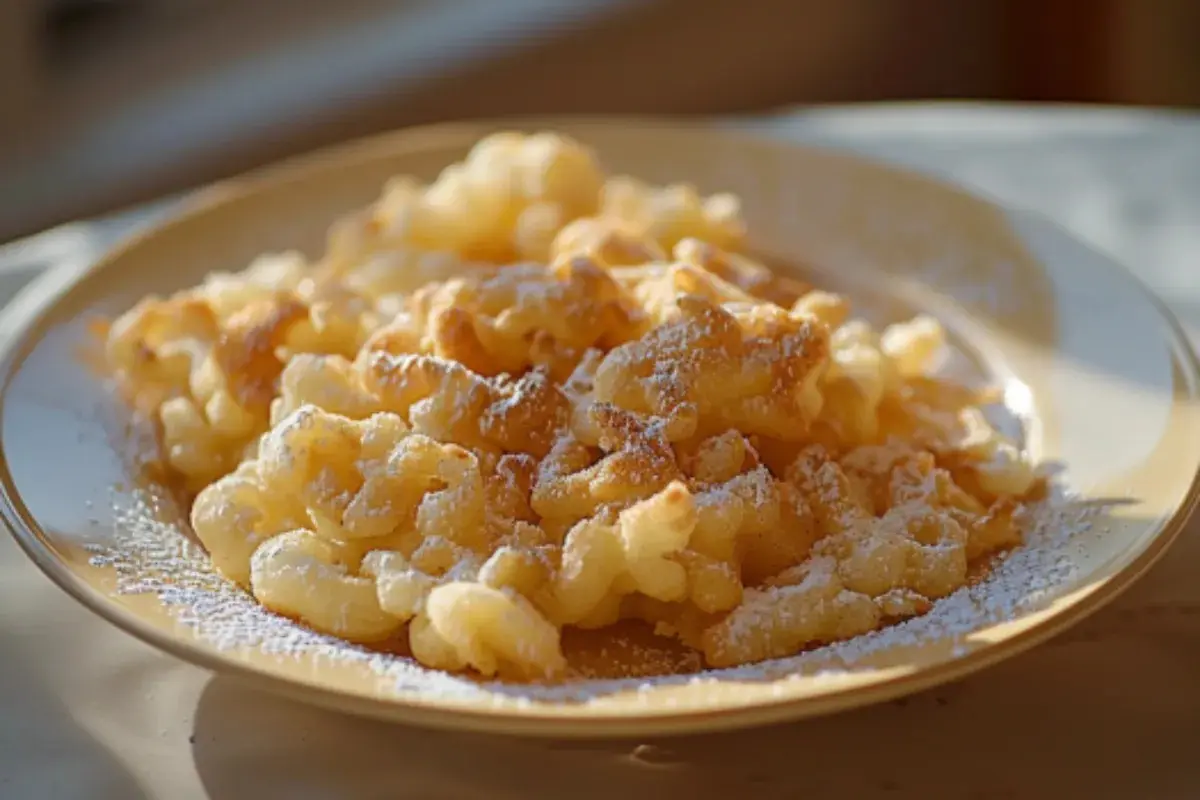Funnels are essential tools for pouring liquids or powders into containers with small openings. Despite being commonplace, there are many situations where a funnel might not be readily available when you need one. Whether you’re working on a DIY project, cooking in the kitchen, or performing maintenance tasks around the house, making a homemade funnel can be a lifesaver. The great news is that funnels can be easily fashioned from common household items, such as paper, plastic bottles, aluminum foil, and cardboard.
This guide will walk you through multiple methods for creating your own funnel, explore the materials you can use, and provide practical examples of how to apply these homemade funnels effectively. By the end of this article, you’ll have not only a funnel but a deeper appreciation for the versatility and ingenuity of using everyday materials to solve everyday problems.
Why You Should Make a Homemade Funnel
There are several reasons why making a homemade funnel can be advantageous:
- Convenience: A homemade funnel is perfect for situations where you need a funnel immediately and don’t want to go out and buy one. You can make one in just a few minutes using items you already have at home.
- Customization: Store-bought funnels come in standard sizes and shapes, which may not always be suitable for your specific task. When you make a funnel yourself, you can tailor it to the exact size you need, ensuring precision and preventing spills.
- Cost Savings: While funnels aren’t typically expensive, the ability to create one for free from items in your home saves money over time, especially if you need them frequently for various tasks.
- Sustainability: Creating a funnel from materials like old paper or plastic bottles helps reduce waste. You’re repurposing items that might otherwise be thrown away, contributing to a more sustainable lifestyle.
Examples of When a Funnel Is Needed
Homemade funnels can be used in a variety of settings, such as:
- Kitchen Tasks: Transferring flour, sugar, or other dry goods into jars without making a mess.
- Beverage Transfers: Pouring liquids, such as oils, vinegars, or juices, into containers with narrow mouths.
- Automotive Use: Refilling engine oil or windshield wiper fluid without spilling.
- Gardening: Transferring seeds or soil into small containers.
- Craft Projects: Filling small containers with beads, glitter, or other materials for arts and crafts.
Best Materials for Making a Homemade Funnel

Several materials can be repurposed into funnels. The choice of material depends on what you’re pouring and how durable you need the funnel to be.
1. Paper Funnels
Paper is a flexible and easily available material for making funnels. Whether it’s printer paper, parchment paper, or an old magazine page, this method is ideal for lightweight tasks like pouring dry goods or small amounts of liquid. For an even simpler solution, check out Lifehacker’s guide to creating a makeshift funnel.
Pros:
- Easy to shape and manipulate.
- Readily available in most homes.
- Perfect for dry ingredients like sugar, rice, or flour.
Cons:
- Not durable for repeated use.
- Can break down or leak when exposed to moisture.
2. Plastic Bottle Funnels
Plastic bottles are among the best materials to make a homemade funnel. They are particularly good for transferring liquids, especially when you need a sturdy funnel that won’t collapse.
Pros:
- Durable and reusable.
- Easy to cut and customize based on the size of the container.
- Works well with both liquids and solids.
Cons:
- Requires a knife or scissors for cutting.
- Not biodegradable if thrown away after use.
3. Aluminum Foil Funnels
Aluminum foil is a flexible and moldable material that you can use to make a homemade funnel that is more durable than paper. This method is particularly useful for temporary funnels that need to handle messy or greasy substances.
Pros:
- Easily shaped and adjusted for any task.
- Durable enough for hot liquids or greasy substances.
- Disposable, making it ideal for quick cleanup.
Cons:
- Prone to punctures or tears if not handled carefully.
- Disposable, contributing to waste if used excessively.
4. Cardboard Funnels
Cardboard funnels are strong and more permanent than paper funnels. They are ideal for transferring dry goods or non-liquid substances and can be made from leftover packaging materials.
Pros:
- Strong and sturdy for heavy-duty tasks.
- Excellent for dry goods.
- Reuses materials that might otherwise be thrown away.
Cons:
- Difficult to make waterproof.
- Limited flexibility when forming the funnel shape.
How to Make a Paper Funnel at Home
Now that you know the materials available, let’s dive deeper into how to make a homemade funnel of each type. These step-by-step instructions will guide you in creating effective, homemade funnels tailored to your needs.
How to Make a Paper Funnel

Paper funnels are incredibly easy to make and work best for dry ingredients or very small quantities of liquid.
Materials:
- A piece of paper (such as printer paper, parchment, or even wax paper)
- Scissors
- Tape (optional)
Instructions:
- Start by cutting a piece of paper into a triangle. The size of the triangle will depend on the size of the funnel you need.
- Roll the paper into a cone, making sure that the tip of the cone forms a small enough opening for your purpose.
- Secure the edges of the cone with tape if necessary to prevent it from unrolling.
- Once the cone is shaped and secured, cut off the tip of the cone to create the opening for the funnel.
- Test the funnel with a small amount of liquid or dry material to ensure the size and shape are appropriate.
Example Use Case for a Paper Funnel
You’re in the middle of baking and need to transfer sugar from a large bag to a narrow jar. By making a homemade paper funnel, you can easily funnel the sugar into the jar without spilling it everywhere. Since you only need the funnel for this one task, the paper funnel is the perfect quick and disposable option.
How to Make a Plastic Bottle Funnel
Plastic bottle funnels are more durable and work great for both liquids and dry substances. This method is especially handy for tasks where the funnel needs to be larger or sturdier than a paper funnel.
Materials:
- Empty plastic bottle (water, soda, or juice bottle)
- Scissors or a knife
Instructions:
- Take a plastic bottle and use a knife or scissors to cut off the top third of the bottle. The part you cut off will become your funnel.
- The bottleneck will serve as the narrow opening of the funnel, while the bottle’s wider mouth will allow for easy pouring.
- Trim the cut edges to ensure they are smooth and safe to handle.
- Clean the bottle thoroughly, especially if it previously held any liquid that might contaminate your materials.
- Use the funnel by placing the bottle’s neck into the container you wish to fill, then pour the liquid or dry goods through the wide opening.
Example Use Case for a Plastic Bottle Funnel
Imagine you’re changing the oil in your car but forgot to bring a funnel. By cutting the top off of an empty water bottle, you can create a sturdy and effective funnel that allows you to pour the oil without spilling it all over the engine.
Crafting an Aluminum Foil Funnel
Aluminum foil funnels are perfect for quick tasks that require a disposable funnel. These funnels can be easily shaped to fit the container and can handle hot or greasy liquids.
Materials:
- Aluminum foil
- Scissors (optional)
Instructions:
- Cut a square of aluminum foil large enough to form a cone. For a larger funnel, use a larger piece of foil.
- Shape the foil into a cone by folding it carefully. Press the seams together to ensure there are no gaps.
- Trim the tip of the cone to create the desired opening.
- Adjust the funnel shape by pressing and molding the foil to fit your container.
- Once the funnel is shaped to your liking, test it by pouring a small amount of liquid through it.
Example Use Case for an Aluminum Foil Funnel
You’re in the kitchen preparing to bake a cake and need to transfer a runny batter into a small bottle for controlled pouring. Aluminum foil is ideal for this task because it can easily be shaped into a funnel that accommodates the thick batter and can be discarded after use.
Cardboard Funnel for Dry Goods
Cardboard funnels are sturdy and reliable, making them perfect for tasks that involve dry materials. This method is especially useful for larger-scale projects or for creating a funnel that will be reused multiple times.
Materials:
- A piece of cardboard (from a cereal box or shipping box)
- Scissors
- Tape
Instructions:
- Cut a piece of cardboard into a triangular shape. The size of the triangle will depend on the size of the funnel you need.
- Roll the cardboard into a cone, making sure the edges overlap to create a sturdy structure.
- Use tape to secure the edges of the cone, ensuring that the funnel maintains its shape.
- Cut off the tip of the cone to create an opening.
- Test the funnel with a small amount of dry material, such as sand, rice, or flour, to ensure that the shape and size are appropriate.
Example Use Case for a Cardboard Funnel
If you’re working on a DIY project that involves transferring small beads or screws into a container, a cardboard funnel is the ideal solution. It’s strong enough to handle heavy items and can be reused multiple times without breaking down.
Advanced Tips for Making Sturdier Funnels
While the basic methods for making homemade funnels are effective, there are several ways to improve their strength and durability, especially if you need to use them for more demanding tasks. Here are some advanced tips for making sturdier funnels:
- Reinforce Weak Points: For paper and cardboard funnels, reinforce the seams with extra tape or glue. This is particularly important if you’re dealing with heavy or liquid materials that could cause the funnel to collapse or leak.
- Double Layering: When using paper or aluminum foil, consider double layering the material to add extra strength. This will make the funnel more resistant to leaks and tears.
- Waterproofing Paper Funnels: If you’re making a paper funnel for liquid use, try waterproofing it with wax paper or by brushing a thin layer of oil on the inside of the funnel. This will help prevent the paper from breaking down when exposed to moisture.
- Stabilizing the Funnel: If you’re using the funnel with large quantities of material, stabilize it by taping or securing it to the container. This prevents the funnel from shifting while you’re pouring, which can lead to spills.
Common Mistakes When Making a Homemade Funnel
Creating a homemade funnel is relatively simple, but there are a few common mistakes that can lead to ineffective results. Here are some pitfalls to avoid:
1. Choosing the Wrong Material for the Job
It’s important to choose the right material for the task at hand. For example, paper funnels work well for dry goods but can easily disintegrate when used with liquids. If you’re working with hot or greasy substances, aluminum foil is a better option. If durability is a priority, plastic bottles or cardboard are your best bet.
2. Improper Sealing
For paper and cardboard funnels, sealing the seams is crucial to prevent leaks. Failing to properly seal the edges can result in the funnel unrolling or liquids seeping through the seams.
3. Cutting the Funnel Opening Incorrectly
When cutting the tip of the funnel to create the opening, it’s important to ensure that the size is appropriate for the task. A too-small opening can cause blockages, while a too-large opening can lead to spills. Always test the funnel before using it with your materials to ensure the opening is the correct size.
4. Not Testing Before Use
Before using your homemade funnel with large quantities of materials, it’s essential to test it with a small amount of liquid or dry material. This will allow you to catch any leaks or issues with the funnel’s size before committing to a full transfer.
Eco-Friendly Ideas for Homemade Funnels
One of the best parts of making a homemade funnel is that it allows you to repurpose materials that might otherwise go to waste. Here are some eco-friendly ideas for creating funnels that not only help you with your tasks but also reduce your environmental footprint:
- Repurposing Old Paper: Use old newspapers, magazines, or leftover wrapping paper to create funnels. These materials are typically thrown away after use, but repurposing them into funnels gives them a second life.
- Recycling Plastic Bottles: Instead of discarding empty plastic bottles, cut them into funnels. Not only do you get a functional tool, but you’re also preventing plastic waste from ending up in a landfill.
- Upcycling Cardboard: Cardboard from cereal boxes, shipping boxes, or other packaging can be repurposed into durable funnels. This is a great way to reuse packaging materials that might otherwise be thrown away.
- Using Biodegradable Materials: If you’re concerned about waste, consider using biodegradable materials for your homemade funnels. For example, you can create a funnel out of wax paper, which can be composted after use.
Practical Applications for Homemade Funnels

Homemade funnels are surprisingly versatile and can be used in a wide variety of tasks around the house. Here are some practical examples of how you can use these funnels in everyday situations:
1. Baking and Cooking
Whether you’re transferring batter into muffin tins or pouring oil into a bottle, homemade funnels can make kitchen tasks easier and cleaner. Paper or aluminum foil funnels work well for transferring liquids, while cardboard funnels are ideal for dry ingredients.
2. DIY Projects
If you’re working on a DIY project, such as filling small containers with paint, glue, or beads, a homemade funnel can save you time and prevent messes. Plastic bottle and cardboard funnels are especially useful for these types of tasks, as they can handle heavier materials.
3. Gardening
When planting seeds or filling pots with soil, a homemade funnel can help you direct the materials precisely where they need to go. Plastic bottle funnels are particularly useful for gardening tasks, as they can handle both dry and wet materials.
4. Automotive Maintenance
Changing your car’s oil or refilling windshield wiper fluid is much easier with a funnel. A plastic bottle funnel is ideal for automotive tasks, as it is durable and can be reused multiple times.
5. Crafting
For arts and crafts projects, a homemade funnel can help you transfer small items, such as beads, glitter, or sand, into containers without making a mess. Paper or cardboard funnels are perfect for crafting, as they can be customized to fit any size container.
Frequently Asked Questions About Homemade Funnels
1. What Can I Use If I Don’t Have a Funnel?
- If you don’t have a funnel, you can easily make one using household items like paper, plastic bottles, aluminum foil, or cardboard. These materials can be shaped into funnels for temporary use, and they work for both liquids and dry goods.
2. Can I Use a Homemade Funnel for Hot Liquids?
- Yes, you can use homemade funnels for hot liquids, but it’s essential to choose the right material. Aluminum foil works well for hot liquids because it can handle heat without breaking down. Avoid using paper or plastic unless they are heat-resistant.
3. How Do I Ensure My Homemade Funnel Doesn’t Leak?
- To prevent leaks, ensure that the seams of your homemade funnel are well-sealed, especially if you’re using paper or cardboard. For added security, use tape or glue to reinforce weak points. Always test the funnel with a small amount of liquid before full use to check for leaks.
4. Can I Reuse Homemade Funnels?
- Yes, homemade funnels made from materials like plastic bottles, aluminum foil, and sturdy cardboard can be reused multiple times. Just make sure to clean them thoroughly after each use. Paper funnels, however, are generally single-use and may not hold up after repeated exposure to liquids.
5. What Is the Best Material for Making a Funnel?
- The best material depends on what you’re using the funnel for. Plastic bottles are durable and great for both liquids and solids. Aluminum foil is ideal for hot liquids or greasy substances. Paper is best for temporary, light-duty tasks, while cardboard works well for dry goods or larger projects.
Conclusion
Making a homemade funnel is a simple, practical, and cost-effective solution for a wide range of tasks. With materials like paper, plastic bottles, aluminum foil, and cardboard, you can create a funnel that meets your specific needs in just a few minutes. Whether you’re baking, gardening, working on a DIY project, or maintaining your car, a homemade funnel can help you get the job done quickly and cleanly.
By repurposing materials from around your home, you not only save money but also contribute to a more sustainable lifestyle. The next time you find yourself without a funnel, remember that you can easily make one using items you already have on hand. Plus, the process of crafting your own funnel is both satisfying and resourceful proof that sometimes the best solutions are the simplest ones.
With this comprehensive guide, you’re now equipped with all the knowledge you need to create a variety of homemade funnels for any situation that comes your way. So, the next time you need a funnel, skip the trip to the store and try one of these easy, eco-friendly methods instead.

